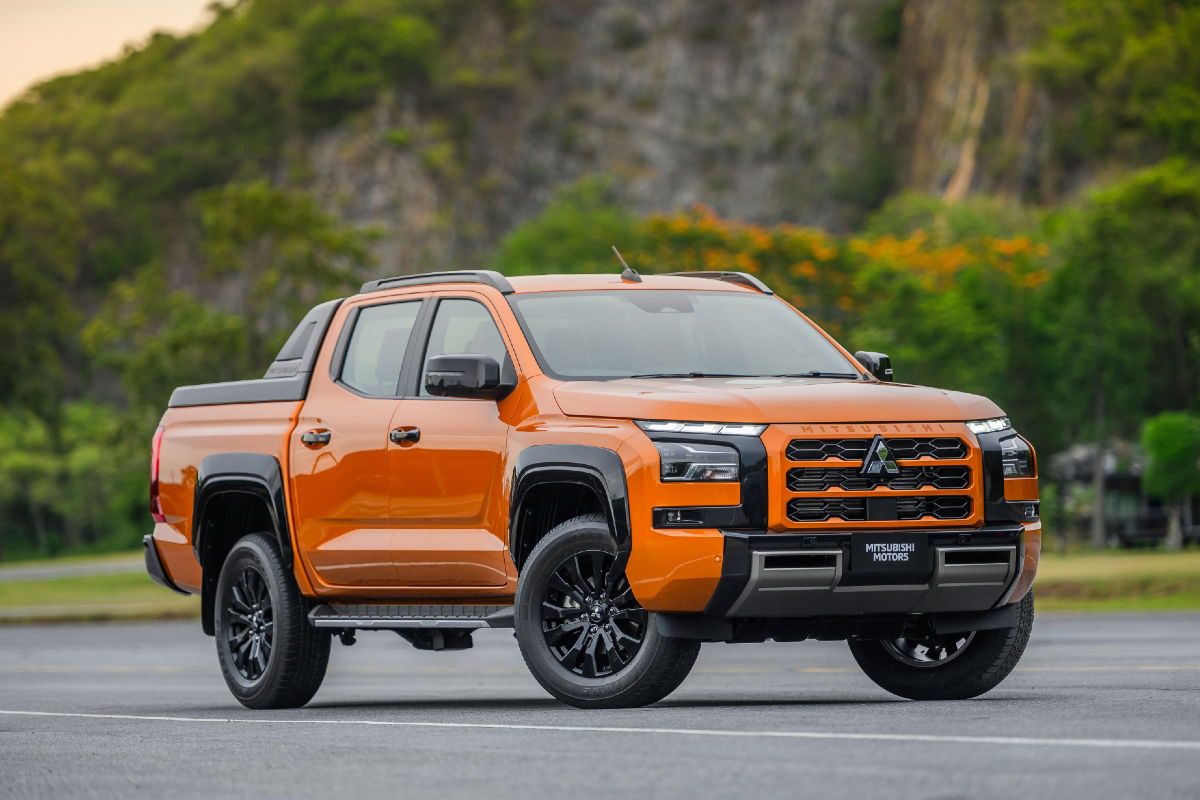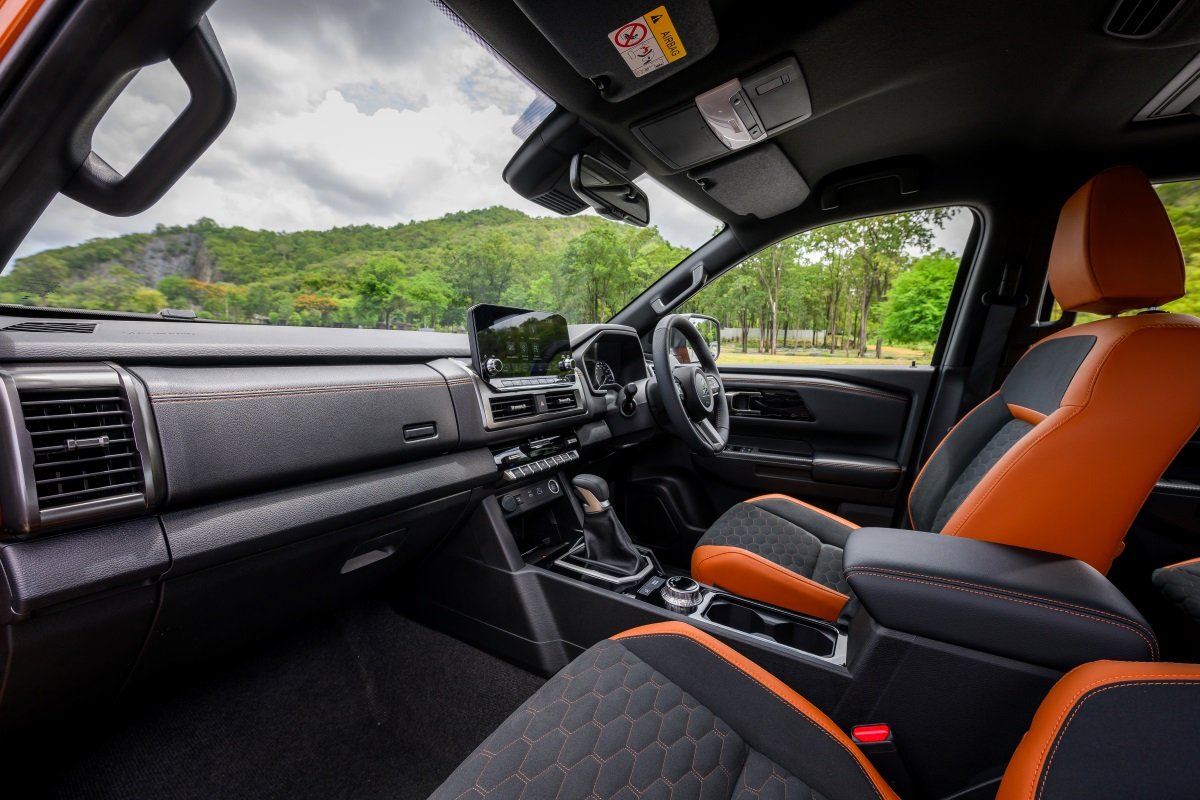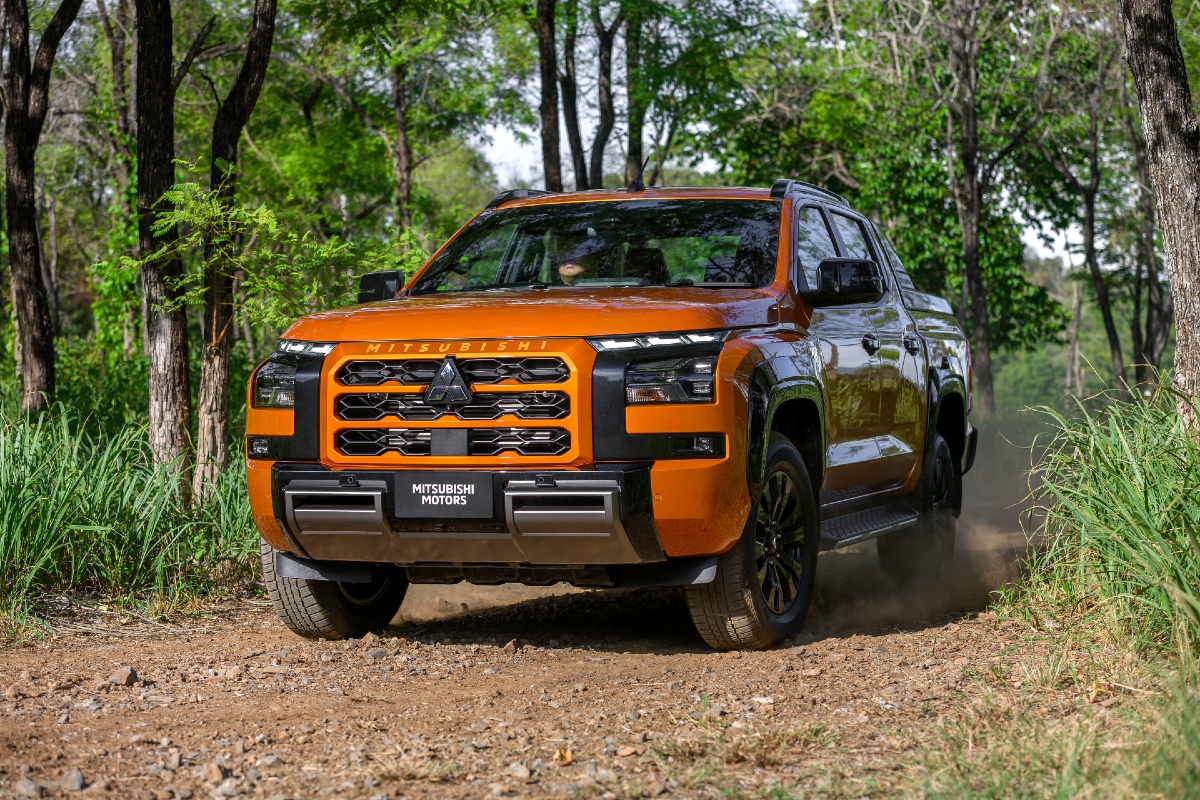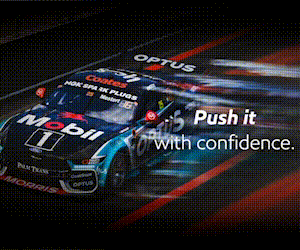
Mitsubishi’s new, sixth-generation Triton dual-cab ute stands to be one of the most important new model releases of 2024. Its release is imminent, and as Australia’s fourth best-selling ute, Mitsubishi has redesigned it from the proverbial ground up to take on Toyota’s Hilux, Isuzu’s D-Max and Australia’s favourite vehicle of 2023, the Ford Ranger.
In this article, we explore five reasons why Mitsubishi’s new Triton is bad news for all three of them.
READ MORE: Mitsubishi Ralliart confirmed to return
1. It has a much improved interior.

The new Triton’s interior is a night-and-day improvement over the old one, which was like climbing into a second-hand vehicle from 2012 with a new car smell. The design is contemporary and smart, there’s a 9.0-inch infotainment touchscreen with wireless Apple CarPlay and Android Auto, and there’s even a wireless phone charger. This is a much nicer place to be.
2. The towing capacity is now 3.5 tonnes.

Thanks to additional grunt from its new 2.4-litre twin-turbo diesel inline-four – 150kW and 470Nm, both up about 10 percent – towing capacity has also increased. By 400kg to be exact, the Triton now boasting a 3.5-tonne towing capacity to match Hilux, D-Max and Ranger. Peak torque is available from just 1500rpm, a whole 1000rpm lower than the outgoing Triton. This is good news for horse-floaters and caravaners.
3. It has a very impressive safety suite.

Dual cab utes don’t come much safer than the new Triton – at least on paper. With the new model having to take on ANCAP’s latest crash-testing criteria, it has to work harder than current Ranger and Hilux did to get the same five-star crash rating. As such, it comes with every feature you could want safety-wise, including a front-centre airbag and advanced autonomous emergency braking (AEB) with junction-assist and reverse capability.
4. It’s better value on-paper.

While Triton prices have crept up substantially compared to the old one – up to $7600 in some instances – it’s still cheaper than rivals. The Triton GSR at $63,840 (before on-roads) closely mirrors the standard equipment list of the Ranger Wildtrak 2.0, itself a $68,490 vehicle. While we doubt the new Triton can overall match the new Ranger, if it’s quite a bit cheaper, it might not need to.
5. It’s much nicer to drive than the old one.

We’ve only had the briefest of drives of a preproduction vehicle – on sand, and with hardly any air in the tyres – but the first impression, however limited, was good. The steering is lighter, Mitsubishi has locally tuned the suspension, and promised much greater refinement. While we’ll reserve judgement until we drive it properly – on- and off-road – it could be good enough to woo a few would-be Ranger, D-Max and Hilux buyers, perhaps many more than those brands would strictly like.












Discussion about this post